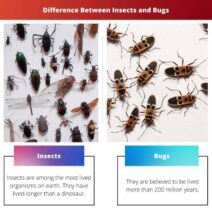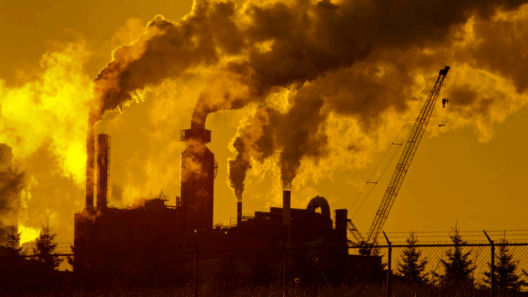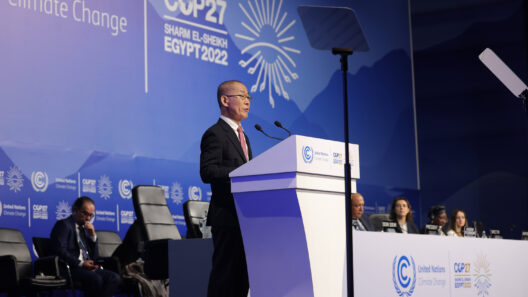As the Earth continues to warm, its oceans, which cover over 70% of the planet’s surface, are undergoing unprecedented transformation. The crisis in our seas is not just a future possibility; it is a present reality, characterized by disturbances that ripple through marine ecosystems, threaten biodiversity, and have profound implications for human societies. This discourse examines the various facets of oceanic degradation driven by climate change.
At the forefront of these challenges is rising sea temperatures. The oceans act as a heat sink, absorbing approximately 30% of the carbon dioxide emitted into the atmosphere, which leads to thermal expansion and an increase in water temperature. This phenomenon catalyzes several dire consequences, notably coral bleaching. Coral reefs, often referred to as the “rainforests of the sea,” are highly sensitive to temperature fluctuations. When the waters warm above critical thresholds, corals expel the symbiotic algae (zooxanthellae) that provide them with nutrients and vibrant color, resulting in a bleached appearance and, if prolonged, mass mortality. The loss of coral reefs translates into a cascading effect on marine biodiversity, as these ecosystems support about 25% of all marine species.
Simultaneously, the issue of ocean acidification is another grave concern. As the oceans absorb excess carbon dioxide from the atmosphere, they undergo a chemical transformation that lowers pH levels, making the waters more acidic. This condition is detrimental to calcareous organisms, including mollusks, crustaceans, and certain types of plankton. For instance, shellfish, reliant on calcium carbonate to form their shells, face significant challenges. The weakening of these foundational species can disrupt entire food webs and compromise the fisheries that millions of people depend on for their livelihoods.
Moreover, the alteration of oceanic conditions leads to shifts in species distribution and migration patterns. Warmer waters drive some fish species toward cooler areas, affecting local fishing industries and threatening the subsistence of communities reliant on specific fish stocks. This phenomenon exemplifies ‘fishing down the food web,’ where overfishing leads to the depletion of top predators and a subsequent increase in lower trophic levels, which can spiral into ecological imbalance.
The deployment of marine protected areas (MPAs) has been proposed as a potential mitigative measure. MPAs serve as refuges for vulnerable species and enhance resilience against the impacts of climate change. However, their effectiveness is contingent upon stringent enforcement and proper management practices. Conservationists advocate for an expansive network of MPAs that can facilitate genetic diversity and support recovery of depleted populations, ultimately enhancing ecosystem services that benefit humanity.
In the context of climate change, the phenomenon of deoxygenation emerges as an alarming trend. Higher sea temperatures and increased stratification hinder oxygen replenishment in deeper waters, leading to hypoxic or anoxic zones—commonly referred to as “dead zones.” These areas are inhospitable to most marine life. The Gulf of Mexico’s dead zone serves as a stark illustration, expanding each year due to nutrient runoff and warmer waters, resulting in massive fish kills and a decline in marine biodiversity.
Mesmerizing though they are, the profound impacts of climate change are not confined to the realm of biological perspectives; they extend to the socio-economic sphere as well. Coastal communities, reliant on fishing and tourism, face existential threats from habitat degradation. Coral reefs and mangroves, crucial for fostering marine life and acting as buffers against storm surges, are being irrevocably altered. Ironically, as our oceans grow warmer, so do weather patterns. More intense and frequent storms destroy coastal habitats and realize significant economic losses for those dependent on these ecosystems.
Furthermore, the intricate intertwining of cultural practices and marine resources cannot be overstated. Many indigenous and local communities possess profound ties to the ocean, with customary practices deeply embedded in their heritage. The degradation of maritime environments threatens not only biodiversity but also cultural identity. The loss of traditional fishing grounds to climate-induced changes engenders a crisis of cultural continuity and resilience.
As we move towards potential remedies, global initiatives aimed at reducing greenhouse gas emissions are critical. Policymakers must recognize the intrinsic value of our oceans in regulating climate and sustaining life. The countries that prioritize ocean health in their climate action plans stand not only to protect marine biodiversity but also to bolster their economies through sustainable practices.
In conclusion, the seas are in crisis, a clarion call for action against the anthropogenic influences leading to climate change. Rising temperatures, acidification, deoxygenation, and habitat destruction are reshaping marine ecosystems in ways that threaten both marine life and human wellbeing. Hence, understanding the breadth of these impacts is paramount. Active efforts in conservation, sustainable management, and legislative action are necessary to avert a cataclysmic future for our oceans. The time to act is now; the health of our planet hinges upon the well-being of its waters.








